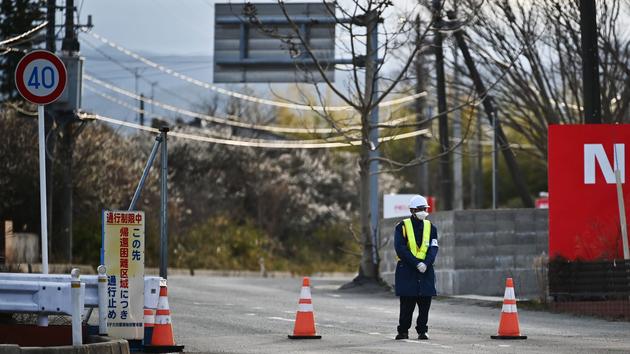Bring back the inhabitants and resume a normal life around the Fukushima Daiichi power plant, which was damaged after the tsunami of March 11, 2011, nine years ago. The tidal wave had caused one of the most serious nuclear accidents in history. However, the return of populations is not a great success. According to a summary note from the IRSN (Institute for Radiation Protection and Nuclear Safety), which is based on Japanese statistics, around 20% of the 95,000 people evacuated from the exclusion zone installed around the plant have returned to the cities. Fukushima prefecture as of December 31, 2019. According to this document, in the four cities closest to the nuclear reactors damaged, the percentage of return is at best 8% in Tomioka, 6% in Namie, 2% in Okuma and 0% at Futaba. The nuclear power plant was located on the seafront between the latter two municipalities. "It is mainly people over the age of 70 who have returned," said Jean-Christophe Gariel, deputy director general of health and the environment at IRSN.
And he believes, personally, that new residents, in particular workers who will go to work to clean up the damaged power station, will come to settle near the Daiichi site.
Mitate to study the return of populations
However, it is some 160,000 people who, in total, were evacuated, recalls in Liberation Cécile Asanuma-Brice, researcher at the CNRS in Japan and jointly responsible for a five-year program called Mitate, which brings together the CEA (Commissariat à l ' atomic energy), CNRS and Nihon University in Tokyo. It is a "Franco-Japanese bilateral cooperation" , specified last December, the researcher, specializing in urban planning. “We had to delay the official launch of the Mitate laboratory which was to be officially launched at the end of March. This program, which will bring together 30 researchers, has only a seed fund of 15,000 euros per year for five years from CNRS. It must in particular study the possible return of the populations, which requires additional funding which must be found with our Japanese partners " , specifies Olivier Evrard, the other French co-manager of Mitate, researcher at the Laboratory of Climate and Environmental Sciences CEA-CNRS and Paris-Saclay University. The latter is no longer welcome in Japan, "because of the coronavirus epidemic that affects France". It can therefore no longer carry out its measurements on radioactivity in the environment.
Clean up Futaba and Okuma stations
However, Japan continues to try to normalize the situation in Fukushima Prefecture. Futaba and Okuma stations are rebuilt and a cleanup of "hot-spots", hot spots created by radioactive fallout, are engaged in these cities polluted by radioactivity. These areas are to be crossed by the Olympic flame, in preparation for the Tokyo 2020 Olympic Games, starting on March 26. Toshiro Muto, director of Tokyo 2020, said that adjustments could be made due to the coronavirus epidemic. Already, less than a quarter of the journalists initially accredited for the lighting of the flame have finally been authorized. The number of spectators was also greatly reduced.
The symbol of the Olympic flame
Anyway, the flame was to leave on March 26 from J-Village, a luxurious training center funded by Tepco, the former operator of the Fukushima Daiichi power station, located 20 km away. To cross the most contaminated area, the flame had to be taken on board the Joban train which runs along the coast and notably pass through the cities of Futaba and Okuma.
Even if life has obviously not returned to normal, research continues. The Amorad program on the consequences of a release of radioactive substances into the environment, piloted by IRSN since 2013 and which brings together 13 partners including 5 French universities and a Japanese, has been extended from 2020 to 2022. A financial extension of 240,000 euros was contributed by future investment projects, via the ANR. In total, the partners are expected to devote some 20 million euros to the program.
The cesium problem on forests
Studies are continuing, particularly on fallout in the ocean. But the forests which cover approximately 75% of the area of the prefecture of Fukushima will remain at high radioactive levels for at least 300 years, because of the significant fallout of cesium in the air, in particular cesium 137 whose period of decay radioactive is 30 years old. In total, the atmospheric releases to air of this element were three times lower than those of the Chernobyl accident and 15 times less than all of the radioactive releases from atmospheric tests of atomic bombs.
However, the region still suffers from an image problem, despite the efforts of the Japanese authorities. The prices of food products from Fukushima prefecture are discounted: around 5% for rice, 10% for beef and 20% for fruits such as peaches.

